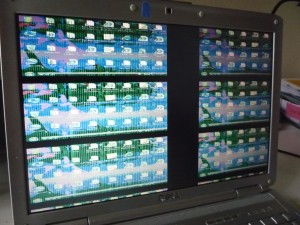“A person could not simply come from any direction into the tabernacle as he pleased — he had to enter through the one gate, which was always located to the east (so that people were facing west when they entered the tabernacle — a direct opposition to the pagan sun worshippers of the day who always faced east).” – the-tabernacle-place.com See Ez. 8:16-18
“The Bible has two chapters on creation and 50 chapters on the tabernacle. Why don’t we teach it more?” – the-tabernacle-place.com
“The detailed commands that God gave the Israelites for the setting up of the tabernacle demonstrate to us God’s holiness — in order for sinful man to approach a holy God, he must come to God in God’s own prescribed way, and no other way.” – the-tabernacle-place.com
Another amazing symbol surrounding Christ’s death is the tearing of the temple curtain from top to bottom. That event is meaningless unless we understand why the curtain was there in the first place and what exactly it was separating — a holy God from sinful man. To see that, we need to be able to visualize the physical layout of the temple. And the origin of the temple itself is difficult to explain apart from its prototype — the mobile tabernacle given to the Israelites in the wilderness.” – the-tabernacle-place.com
“why is Jesus so often referred to as our “high priest” in the New Testament? Invariably, you are forced to go back to the tabernacle to explain the nature and purpose of the priesthood.” – the-tabernacle-place.com
“Its physical structure, ‘a copy and shadow of heavenly things’ (Hebrews 8:5), teaches us spiritual lessons about eternal truths.” – the-tabernacle-place.com
“For Christ did not enter a man-made sanctuary that was only a copy of the true one; he entered heaven itself, now to appear for us in God’s presence.” (Hebrews 9:24)
Sig. of only one gate & tall outer walls… to approach God you have to do it God’s prescribed way, and no other way.






